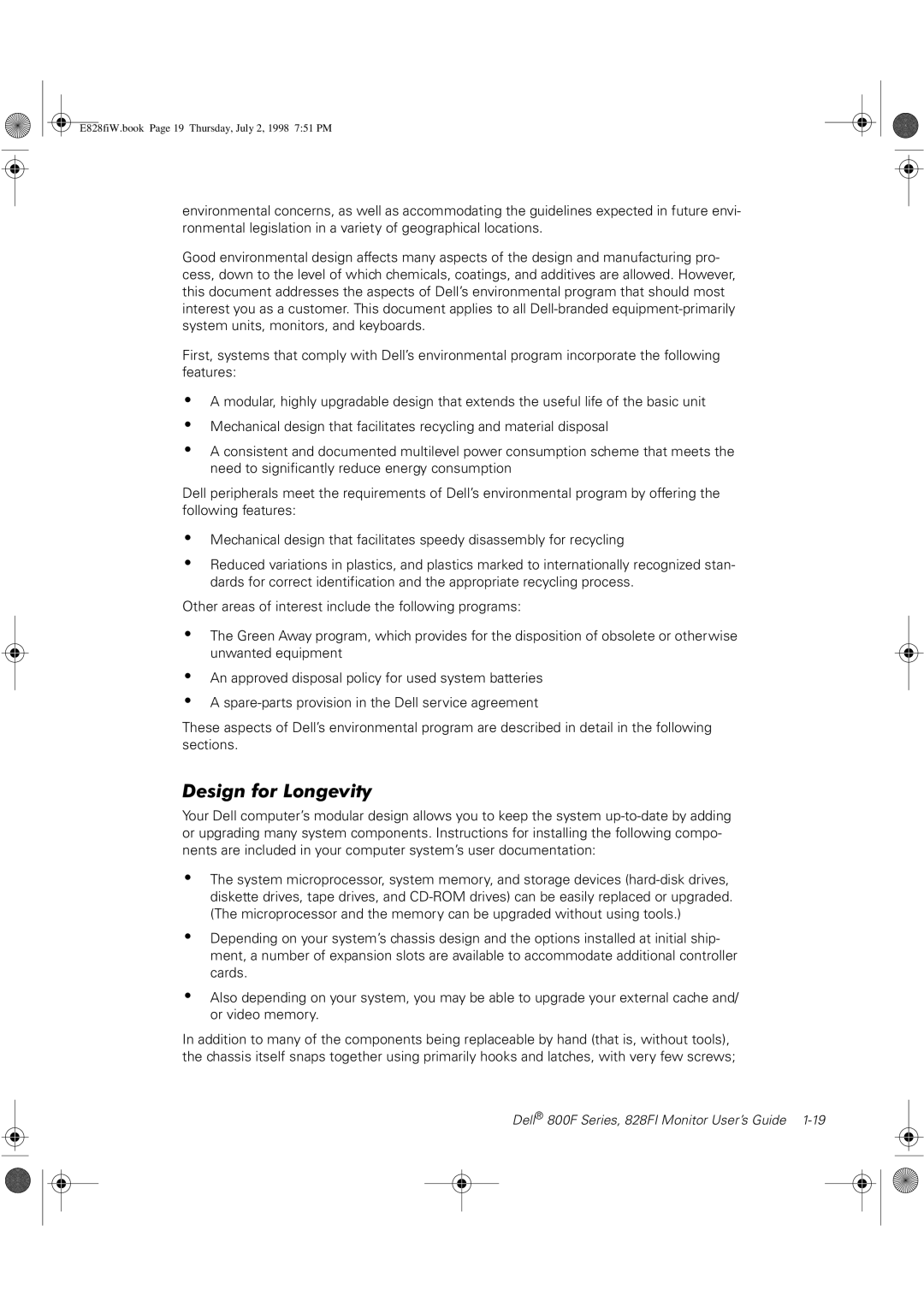800F, 828FI specifications
The Dell 828FI and Dell 800F are two standout models from Dell’s impressive lineup of business-oriented workstations. Tailored for productivity and performance, these devices are designed to meet the challenging demands of professionals in various fields, such as graphic design, engineering, and data analysis.The Dell 828FI boasts a sleek design, making it an aesthetically pleasing addition to any office environment. It features a powerful Intel processor, offering multiple cores that ensure smooth multitasking and efficient workflow management. Users can choose from various configurations, enabling them to select the ideal specs that meet their specific performance requirements. With high-speed DDR4 RAM, the 828FI ensures quick access to data, enhancing overall system responsiveness.
On the other hand, the Dell 800F is focused on maximizing storage options, accommodating both SSD and traditional HDD configurations. This versatility provides users with the necessary speed for operating systems and applications while allowing ample space for larger projects and files. The 800F also prioritizes security, featuring advanced encryption technologies, secure boot capabilities, and robust BIOS protection to safeguard sensitive data.
Both models come equipped with Dell’s innovative thermal management technology, which ensures optimal cooling during intensive workloads. This is crucial for maintaining performance stability and prolonging the lifespan of the components. Additionally, the range of connectivity options, including USB-C, HDMI, and Ethernet ports, enables easy integration into existing infrastructures and supports various peripheral devices.
Graphics performance in both the 828FI and 800F is enhanced through support for high-end graphics cards, catering to professionals who rely on detailed visual representations and rendering for their work. The Dell Precision series, which includes these models, is known for its ISV certification, meaning they’re optimized for leading software applications, ensuring reliability and performance consistency.
Both workstations are designed with user-friendly features, including easy access to components for upgrades and maintenance purposes. Dell’s commitment to sustainability is reflected in their environmentally friendly packaging and energy-efficient designs, which help organizations minimize their carbon footprint.
In conclusion, the Dell 828FI and 800F are powerful workstations that combine high performance with innovative features, making them ideal for a wide range of professional applications. Their cutting-edge technologies, tailored configurations, and attention to user needs set them apart as strong contenders in the market for business workstations.

